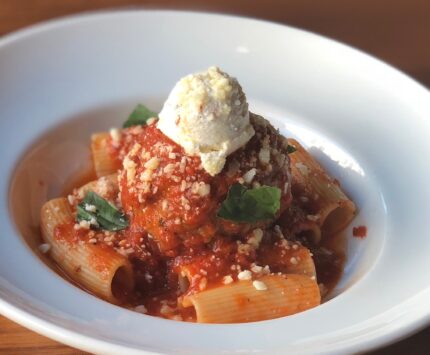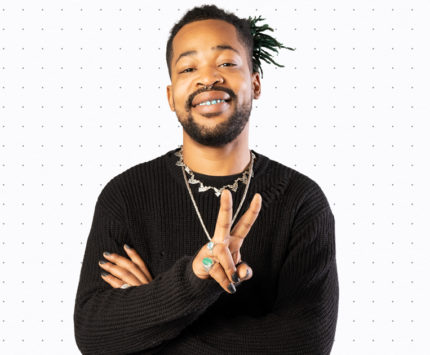Michael McRobbie Is Leaving Bloomington With No Regrets

Illustration by Curt Merlo.
Michael McRobbie swears Mitch Daniels isn’t the problem.
But it has been inconvenient trying to build a legacy as Indiana University president with the headline-making former governor nearby leading Purdue University. The Atlantic, Forbes, and CNBC covered Purdue’s years-long tuition freeze, solidifying Daniels’s reputation as a reformer in higher education. McRobbie has tackled the student affordability crisis at IU, too—with impressive results. His straightforward program to limit student debt saved alumni more than $138 million. It led to law changes in more than a dozen states. But Forbes didn’t mention it.
Beyond addressing debt, McRobbie’s significant impact on IU in his 14 years as president happened largely under the radar. He built IU’s public health and engineering programs from scratch, doubled enrollment of minority students, improved the graduation rate, and built IU’s reputation as a top research university. But even in niche industry publications like Inside Higher Ed, Daniels was at least mentioned in, if not the subject of, 114 articles since he became Purdue president. A similar search for McRobbie turned up only 26.
This dynamic is nothing new for McRobbie. “He’s always going to get attention beyond what a normal university is going to get,” McRobbie says of the man who was once floated as a U.S. presidential candidate. “I think the question of whether we’ve gotten the attention we deserve is not related to that. If there wasn’t Mitch there, or wasn’t Purdue there, I think it would still be an issue.”
Teresa Lubbers, Indiana’s higher education commissioner, has worked with both men. She says their styles are different, “but I don’t think that diminishes their individual effectiveness.” Daniels is part of a new breed of higher education presidents who are outsiders, coming into universities to shake up the establishment after a career in politics or business. McRobbie was a conventional hire, rising through the administration over decades to eventually arrive at the top job. But that’s also one reason those who work with McRobbie like him. They say McRobbie is one of the most effective higher education leaders in modern history. He’s just understated.
“He seems to have been the right person, at the right time, with the right kind of vision for where IU needed to go,” Lubbers says. “I think he has been a transformational leader. He’s proven he’s willing to take thoughtful risk.”
McRobbie describes himself now as a Hoosier by choice. But his journey to IU actually started about 10,000 miles away in Australia, where he was born, raised, and began what would become a lengthy academic career. More than a decade after earning U.S. citizenship, the Australian accent from his childhood in Melbourne and Queensland still remains. At college, McRobbie majored in philosophy. His 1979 dissertation for The Australian National University is a 280-page deep dive into proof theory, logic, and “the ways of reasonableness.” He studied automated reasoning and artificial intelligence, and eventually became an expert in computer science and information technology there.
McRobbie’s academic ventures in Australia impressed former IU President Myles Brand, who hired the Fulbright Scholar in 1997 to become the university’s chief information officer. Brand tasked McRobbie with “bringing Indiana University into the modern era as it relates to information technology,” IU trustee Pat Shoulders says. When he arrived, IU’s servers were out in an abandoned elementary school on the bypass, basically an afterthought. Under McRobbie’s direction, IU developed a high-speed fiber network linking IU with other universities, founded IU’s School of Informatics, and helped IU acquire some of the nation’s fastest supercomputers in order to push the boundaries of IU research. He was eventually promoted to become IU’s vice president for research—then again to become its interim provost.
McRobbie took over the top job at IU in 2007, when his predecessor, Adam Herbert, was driven out after a few years as president. Angry faculty members argued that Herbert wasn’t a good decision-maker. John Walbridge, president of the Bloomington Faculty Council, says that when Herbert left, a dean told him that university presidents had to move often, “because after that you’ve made so many decisions that made someone mad that it’s impossible to be effective.”
Fourteen years in, McRobbie has never had that issue. He has largely enjoyed the faculty’s support. And he has showed it in return, even in simple ways. McRobbie personally calls each IU professor when they are honored by the university or in their fields of research. While many presidents consider professors to be a “necessary nuisance,” McRobbie is different, Walbridge says. “A lot of university presidents are at war with their faculty, and he has never been. Often, when the university president retires, people are glad to see the back of him. That’s not generally the case with McRobbie.”
While McRobbie’s head-to-the-ground approach has been popular with faculty, he hasn’t always been a favorite of students. A group of Indiana Daily Student opinion writers went so far as to say in a recent headline that McRobbie “ignored student needs,” which will cost him his legacy. “You would be hard-pressed to find a student or IU worker who has interacted with McRobbie personally,” according to the piece. Those concerns came to the surface even as his tenure was just starting. In 2007, IU’s then-student government leader told the IDS that McRobbie had failed to respond to meeting requests despite repeated attempts. “It’s not just a view, it’s the truth. He is not involved enough,” the student, Betsy Henke, said at the time.
McRobbie’s record is complicated in some other areas as well, such as student diversity. IU has almost doubled the amount of minority students across its campuses since McRobbie took over. Students of color now make up 28 percent of IU’s student body, compared to 14.5 percent in 2007. But the Black population there has not followed suit. The number of Black undergraduates is about the same as it was when McRobbie started. Compare that to IU’s Hispanic population, which has more than tripled over the same period. According to Carolyn Calloway-Thomas, chair of African American and African Diaspora Studies at IU, McRobbie was “devoted” to the issue throughout his tenure, but the next president needs to double down on his work. “Indiana University has not done every single thing it might have done” to improve diversity, Calloway-Thomas says.
Still, McRobbie has accomplished something rare in higher education leadership these days: longevity. His tenure is twice as long as that of the average university president. “It’s a real achievement,” Daniels says of McRobbie. “Frequently people say, ‘How are things going?’ I say, ‘Great, but that could change in five minutes at this job.’ Fortunately for Michael, those five minutes never came.”
Among U.S. higher ed leaders, McRobbie has one of the more reserved personalities, says Molly Ott, an associate professor at Arizona State University who studies higher education leadership. He has “followed the template of what historically a successful presidency has been,” and avoided elevating his own personality above the institution. That tends to go over well with faculty members, who often stay at the university long enough to experience multiple presidential administrations, priorities, and personalities. McRobbie knows he’s the face of the institution and the decision-maker. But he believes the success of a university rarely can be attributed to one person. “I’m not ego-less,” McRobbie says. “I’m proud of what’s been achieved, but I’m aware of how much is due to the efforts of hundreds of other people.”
John Watson, a plant biologist and IU professor, describes McRobbie as the “calm, steady leader that we really needed and not the rah-rah cheerleader type. Just good solid logic.”
Board of trustees chairman Michael Mirro believes McRobbie has proven himself in times of crisis. He points to McRobbie’s leadership during the early, chaotic days of the pandemic. McRobbie came up with the idea to bring IU’s COVID-19 testing in house by repurposing existing testing infrastructure. “He’s a problem-solver, and he also plans very well,” Mirro says. “He is, in that regard, unflappable by these major dislocations and dystopian events.”
McRobbie says he has stuck to the same modus operandi throughout his career: He makes decisions after gathering the experts and “having them argue out the courses of action. I really am a strong believer in the fact that if you can rigorously debate something with experts, based on data and facts and reason, you can work your way to the best solution.”
As he prepares to retire, McRobbie says he wants to be remembered for thinking strategically, for being a leader who didn’t care about “gimmicks.” If he was referring to Purdue’s media-friendly tuition freeze, he didn’t say. But IU’s approach to student debt is the opposite of flashy: The university now regularly sends a letter to each student informing them about their debt load, and what it’s likely to cost them with interest when they graduate. It hasn’t gotten much press, but McRobbie’s concept has served its purpose well, resulting in a 21.6 percent reduction in borrowing across IU’s campuses. Lumina Foundation president Jamie Merisotis, who oversees grants that go to IU, acknowledges that the university “has done a lot that hasn’t gotten attention.” But, Merisotis says, the student debt reduction program has been a success that deserved more praise. “When you’re living in the same state as Mitch Daniels, that’s certainly a complication,” he says. “But Michael has done a fantastic job.”
Perhaps the most obvious example of the way McRobbie’s brain works—and how he used his penchant for logic to put his stamp on the institution—is the extensive academic restructuring he organized. McRobbie saw that IU had been slow to adapt to some 21st-century academic trends. He combined several departments into a media school, and led the creation of 10 new programs, including two devoted to public health, an engineering program, and an architecture school. “I think that a lot of my tenure has been about modernizing and bringing Indiana University up to date,” McRobbie says. “We had slipped behind in some areas. There were opportunities that we hadn’t taken advantage of.”
His focus on improving the academic excellence of IU resulted in increased graduation rates, from 38 percent to nearly 53 percent over his tenure. The university now has more research funding—$854 million—than ever before. It is no longer one of the only public universities its size lacking an engineering program. IU’s public health schools have proven useful to the state during the pandemic, as researchers studied the virus and conducted contact tracing in Indianapolis. According to McRobbie, the full potential of the academic changes will continue to be proven over time: “The impact is not going to happen overnight,” he says.
McRobbie believes his legacy at IU will depend on whether the next president—Kennesaw State University’s president, Pamela Whitten—continues his approach or takes IU on an alternate course. “I’ve seen institutions where an enormous amount has been done by a president, and then someone else has come on—and I’m not being critical—but has decided to move in a completely different direction,” McRobbie says. Consequently, momentum is lost.
Whatever path IU takes next, Mirro, the trustee, believes they’re not likely to forget McRobbie’s impact: “He’s going to be a very hard act to follow.”





